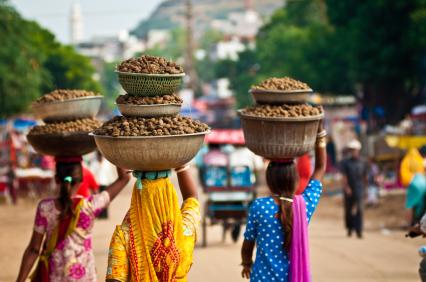
Indian Railways is one of INSEAD’s biggest executive education clients, and the Minister visited the school’s Asia campus as part of his tour of Singapore and Malaysia. During his visit to INSEAD, he told a gathering of MBA participants, alumni and executives about his strategy for bringing the rail network into the 21st century.
Minister Lalu Prasad - INSEAD Knowledge
Minister Lalu Prasad
Flouting prescriptions to privatise Indian Railways, retrench staff, and increase passenger and freight fares by 20 per cent in every budget, Prasad instead chose to keep on board 1.4 million employees and 1.1 million pensioners, reduced fares by up to 45 per cent, and - while refusing to privatise the core business of Indian Railways - started public-private partnerships in some peripheral areas.
“We have broken the myth that whenever any government organisation runs into losses that you privatise it and retrench the manpower … My belief is that if we have honesty, vision and commitment to the organisation, there is no possibility of any institution and corporation running into losses.”
It’s a strategy based on volume. While output has increased threefold, real operating costs have fallen over the last 25 years. By increasing the capacity of a typical long-distance train to 2000 passengers from 800, unit costs fell by 45 per cent. The practice of taking seven days to load or unload a freight train was reduced to five, and systematic changes have helped to rein in corruption. Garib rath trains, also known as the ‘poor man’s chariot’, now have air-conditioning with cushioned seats and suction toilets.
Bringing down freight fares has greatly benefited local industry, Prasad says. In a country where agriculture is the backbone of the economy, he says there is a huge role for Indian Railways in helping farmers directly connect with markets for their goods.
“There are no markets in the places where production happens and middle men buy the agricultural produce at cheap prices. We are going to open agricultural centres at stations so farmers don’t have to search for markets. Through joint ventures, we will set up cold storage and purchase points in stations, as well as freezer containers, so they can send agricultural produce around the country and beyond. We will charge farmers appropriate and reasonable prices. This will enrich farmers, and this increase in income will mean they can buy the things that everyone else is buying.”
With regard to private investment, Prasad says the turnaround has piqued interest in investing in the railways. While the private sector can play a role – in building engines and wheels, and world-class stations, for example – Prasad insists there is absolutely no chance of allowing privatisation of the core business, “rail, running of trains, [and] control of all the trains.” Indian Railways’ surplus earnings mean that the organisation does not have to depend on overseas development assistance from bodies such as the Japan International Cooperation Agency to expand. “JICA or no JICA - we are self-sufficient.”
In an exclusive interview with INSEAD Knowledge, Prasad said freight trains are Indian Railways’ “earning horse,” and he has extensive plans for expanding freight lines, increasing their efficiency, and capturing the 60 per cent of goods that are still transported by road. A third line – a dedicated freight corridor – is also being constructed to connect even the most remote areas with all ports and industrial hubs.
Prasad is also keen to help in India’s water conservation efforts, by building siphons and canals, and – on the wasteland on either side of the 64,000 kilometres of track – pipes with water for drinking and irrigation. He also outlined efforts to reduce fuel consumption by building train carriages from aluminium to reduce their weight. “With the increasing price of fuel, we have to keep an alternative in mind. Therefore, we are going to electrify the main routes in the entire country. The (proposed civil) nuclear deal (with the US which would allow India to develop nuclear technology to meet its growing energy demands) – which should be reached – is also likely to help.”
With an eye to the future, Prasad says that as India’s population continues to grow, there will be a need for more trains, more engines and wheels. “Even now, we buy wheels from abroad. We have only two factories, and are building a third. It’s fine that these things come from abroad but we have the skills, unemployment, and youth.” Prasad also recommends learning from another country with a “magnanimous population” – China. “China has gotten really far ahead. We will have to learn from them
… Instead of jealousy, we should see what our neighbour is doing and copy that.”
Indian Railways’ turnaround had required a fundamental shift in mindset. As Prasad’s adviser, Sudhir Kumar, notes: “We are not in the business of railways; we are in the business of transportation – one of several modes of transportation, and the only way to survive and thrive in the marketplace is to offer superior and compelling value to your customers.”
-
View Comments
-
Leave a Comment




No comments yet.